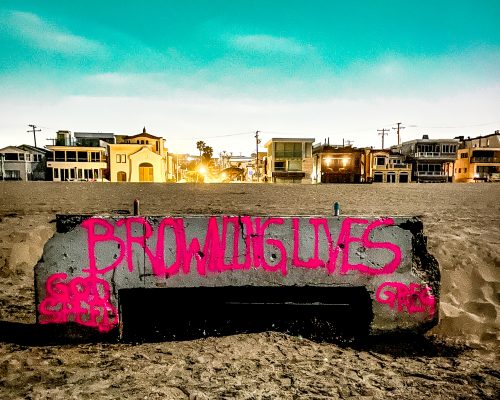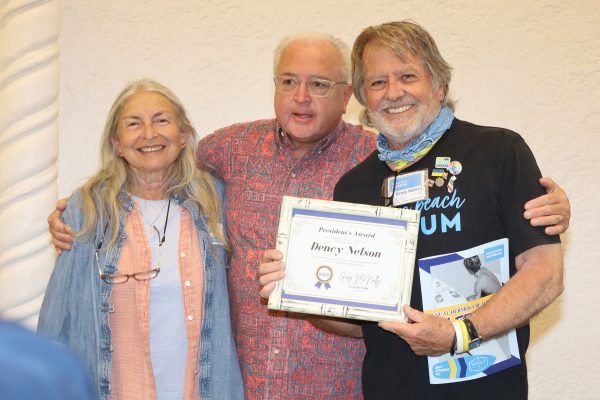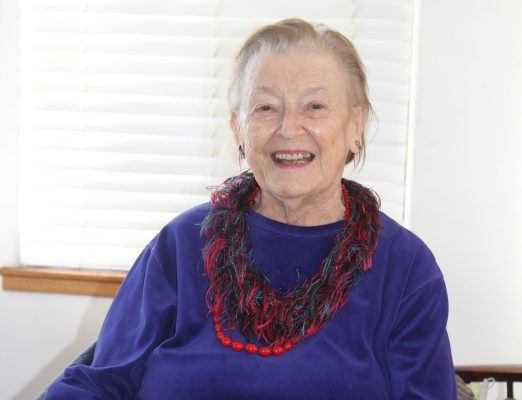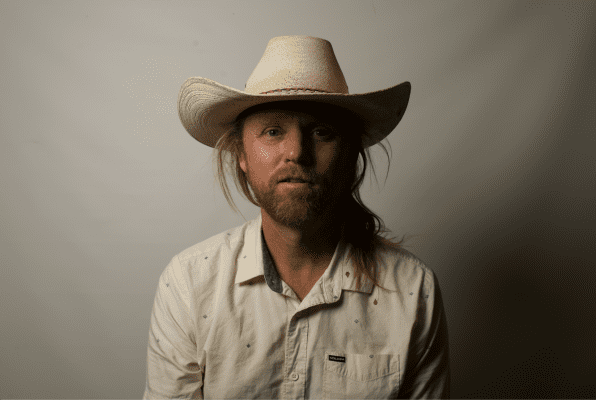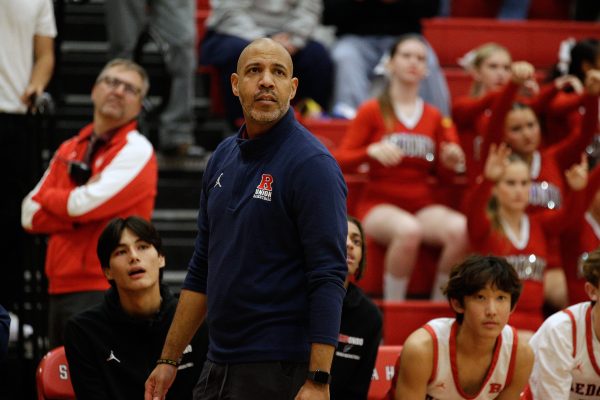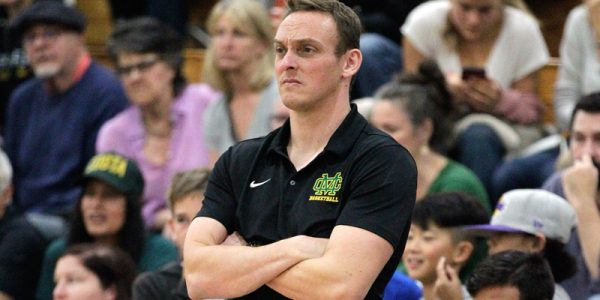
originally published Jan. 8, 2009
A few years ago, in a secret subterranean workshop in the mountains of Colorado, a young man altered his weaponry. He had already begun honing his craft to a fine spiritual point, but as he descended to his shop day after day, other possibilities began to emerge.
His hands had been made strong by years of climbing rock, giving him an unusually powerful grip and abilities few of his peers possessed. Now the tools of his trade – the guitar, the capo, the looping machine – suddenly merged in a way that created something, somebody, different.
A new sound rang from the mountains. Thus was born the Acoustic Ninja.
News of his feats spread like wildfire through the underground outlet known as YouTube. People in need of his skills reached out to him from across the country, beaming messages to him through the ether, a system more mundanely known as email. The legend of the Acoustic Ninja grew.
This is, in fact, exactly how the unusual musical journey of Trace Bundy has gone down. He is an emerging young guitar superhero known for his gallant pyrotechnics in a style heretofore not associated with martial arts – that is, fingerstyle acoustic guitar. Bundy, who last year was identified by Acoustic Guitar magazine as the most promising new guitar talent on the planet, has developed a radical approach to the guitar unlike anything the world has seen since the passing of the legendary Michael Hedges.
The guitar, in his hands, is somehow transformed into something more than six strings. If he has not quite reinvented the instrument, Bundy at the very least has pushed the boundaries of the guitar’s capabilities. This is also why YouTube has been so central to his rise: you have to see him to believe what he is doing. To watch Bundy is to have this feeling of glimpsing some mad-scientist-guitar-genius with the soft symphonic soul of a Romantic poet. His hands don’t play by the normal rules of guitar, each moving all around the instrument, tapping it here, plucking it there, constantly moving three capos to various points on the neck, and doing it all with a bemused, stoic calm that belies the ecstatic sounds Bundy is coaxing from his instrument.
And what is even more astonishing is that Bundy is a self-taught player. He didn’t begin playing until he was 12 years old – odd for a virtuoso – when he and his brother each pitched in $5 to buy a guitar from a guy named Herbie and begin learning Metallica songs. His family couldn’t afford lessons, so from the beginning he had to make up his own rules.
Bundy, who plays Live at the Lounge in Hermosa Beach on Friday night, hasn’t stopped making and breaking his own rules since.
“It’s thinking kind of outside the box of like, you know, this is how it’s traditionally been played, one hand over here, plucking, one hand over here, fretting,” Bundy said in an interview this week. “And to think of it almost as a drum kit, almost as a piano, in all these different ways, and then incorporating it into songs. I mean, not only is it fun to watch, but it’s a blast to play. I have so much fun.”
The transformation
Bundy didn’t plan on becoming a musician. He realized early on that he picked up the guitar easily – specifically, when his Grandma was impressed with his version of Johnny Be Goode at the age of 13 – but he believed his limitations outweighed his gifts. He couldn’t sing.
And so he pursued his more obvious talent. Bundy was a scholarship engineering student at the University of Colorado, where he earned a master’s in civil engineering and eventually even became Professor Bundy. All the while, he continued to play guitar in a manner that somewhat exceeded mere hobby. He was, in fact, a well-regarded local musician, and he made a couple fairly remarkable albums that he recorded with his own computer at home (including 1999’s “O Night Divine”, an absolutely lovely, melodic collection of old Christmas songs).
Something changed one day, however, when he was playing around at home in Boulder and he began tapping out a melody with just his left hand on the fretboard of his guitar.
“A light went on, kind of a lightbulb moment, and I realized I wasn’t using my right hand at all,” Bundy said. “And that is where I kind of thought, ‘Well, what can I use my right hand for?’ And I hit a little bass note, and it was like, ‘Oh, that is kind of cool…” Hit another one, that’s even cooler. I thought it would be impossible to write a whole song like that but eventually writing up the song ‘Dueling Ninjas.’”
“I think that is when things started getting real interesting.”
The ninja thing had already come into play on a previous album – one of his homemade recordings – when he was in a rush to get the labels on and the record out the door and just playfully called a composition “Acoustic Ninja.” He hadn’t realized he was foreshadowing things to come.
“Two words that don’t really go together are acoustic and ninja,” Bundy said. “I thought it would be a funny name, and so I used as a name of this song. Then someone wrote a newspaper article about me for a show in Colorado and titled it ‘Attack of the Acoustic Ninja.’…So people started using that name, and I bought the web domain name and that links to my website. I don’t really have any martial arts skills whatsoever or anything.”
A friend later heard his new, as-yet-untitled composition using his new fingertapping technique and made a remark that stuck. “I was kind of working on that and someone comes up to me and says, ‘That kind of looks like two people fighting each other – maybe two ninjas are fighting each other,’” Bundy recalled. “And I was like, ‘Ah…interesting.”
Eric Clapton once famously remarked on the moment that forever changed him musically – when he first heard a recording of bluesman Robert Johnson (he who sold his soul to the devil) and was bewildered to learn it was one person playing, not two. This is the sensation one gets with Bundy and his ninja approach; he often sounds like at least two players, sometimes more, yet nearly every single thing he pulls off on record is what he also is able to perform live. He’s not a studio geek.
But Bundy is a workshop geek. His engineering background undoubtedly feeds into his music on many levels – music is ultimately mathematical, after all, intervals at play – but it also means he has the practical skills to head downstairs into his guitar laboratory and do weird things to his equipment. He cuts grooves, for example, into his capos – the clamps that are usually used to globally change the key of guitar, but with his alterations are able to create on-the-spot alternative tunings, changeable within the course of a song or even a passage within a song.
“The left-brain engineering helped with the music theory and mathematical side of playing, and then kind of my right brain helped with the creativity of writing songs that sound pretty and hopefully move people,” he said.
By whatever technical means Bundy uses, though, what courses through his music is an even more uncommon passion and lyricism. Beginning with 2004’s “Adapt” album and continuing with his most recent DVD and CD combination “Missile Bell Vol. 1” and “Missile Bell Vol. 2”, Bundy has embarked on a strange and wondrous musical journey. And despite the fact that he is an “independent” artist – with no music industry conglomerate hawking his wares and no marketing firm heralding his arrival – legions fans are now accompanying him on his journey. His YouTube clips routinely attract more than a million views, and his non-stop touring is purely fan-based.
Thus Professor Bundy became the Acoustic Ninja.
“I physically had to quit my job because I couldn’t keep up with the demands I was getting to tour,” he said. “Like I could do maybe a quick weekend tour and try to be back in class on Monday morning in time to teach. That’s all I could do, so I had to quit, and that is when I started touring all around the country. It was just from people’s emails, too – like, hey, what’s it take for you to come to Nebraska? It’s so cool. I get to be really picky and choosy over what I play because enough stuff comes I can stay busy for as long as I want.”
The bell
Bundy’s true gift may be his ability to craft narratives in songs without words.
In fact, the “Missile Bell” albums are a coherent whole that tell the story of Bundy and his wife Becca’s journey to Central America. The couple traveled under the auspices of a humanitarian group named Agros, and Bundy played for some small villages in Costa Rica, El Salvador, and Guatemala where many of the people had never before witnessed a professional musician performing. The entire village would gather around the man and his guitar and listen in astonishment.
But in one village in Guatemala, Bundy saw something that repaid him in astonishment tenfold.
“There is a village there that had gotten destroyed during a civil war that swept through that area,” Bundy said. “The people had to run off the land and kind of get away, and ten years later they came back to that original plot of land and everything had completely been destroyed. So they started rebuilding, and they first thing they decided to build was a church. They were almost finished with the church and they realized they didn’t have a church bell, and they really wanted a church bell. So they went looking around and they found an old missile shell from the war that had been one of the missiles that destroyed them in the first place. But rather than being angry with it, or wanting to destroy it, they decided to hoist the missile up and make that their church bell. So a really strong image of like taking something destructive and transforming it into something beautiful – redemption – really inspired the whole album.”
“Missile Bell” tells this story with startling effectiveness. It contains moments of sorrow, sadness, magic and wonder, and though the playing is technically brilliant, what comes through again and again is a man actually playing his heart out. There are unexpected, ethereal elements – rain sometimes seem to pour forth from Bundy’s guitar and dancing feet are everywhere – but the reassuring knock of wood and the deep resonance of ancient droning give the sound a solid, feet-on-the-beautiful-earth kind of feel.
A few tracks stand out. “Communion” and “Liturgy” are singing melodies that give the listener a sense of movement, of travel, and of the sense of revelation that comes with newness (and simultaneous oldness) of place. Some of the songs are stories within stories, such as “Becca and the Blue Capo” and “Tiny Lolf’s Journey.” In the latter, one can almost hear the sound of tiny feet scampering through a green world.
“When I was writing it and playing it, it had this kind of – this is going to sound weird – but somebody stepping through the forest sound to it, like a very upbeat kind of forest sound,” Bundy said. “I don’t really know what that means, but I named it Tiny Lolf’s journey as if it’s this little guy Lolf embarking on some journey through a forest or something.”
The other dimensional and somehow holy sounding “Retroverse” shows Bundy pulling off a surprising trick – using the technology of his looping machine without getting lost inside the machine, thereby creating a deeply soulful sound. It also shows that this guy can pretty much do whatever the hell he wants on a guitar.
“Basically, I learned how to play ‘Phantom of the Opera’ backwards, and based the whole song on it,” Bundy said. “And in the end, I take that backwards song and put it backwards and play ‘Phantom of the Opera’…If that makes sense.”
Perhaps the masterwork on this recording is Bundy’s plaintive “Love Song”, a song that somehow combines a sort of simplicity with a flowing sense of musical mystery. Bundy said that the song is not a romantic love song – “Beca and the Blue Capo” is the only song he’s written specifically for that reason – but rather a remainder of larger love.
“I wrote it out of a desire to remind myself to do what I do out of love,” Bundy said. “People have been coming up to me saying, ‘Hey it must be pretty awesome to be known as a great guitarist and to have that be your legacy in a way…’ And I was thinking about it and thinking, man, if I get to the end of my life and like all I am known for is as someone who used to be able to play the guitar really well, I think that would be kind of a letdown for me and the people around me. You know, it’s great, I can use this talent, and I want to use it with passion…but at the end of it all, I want to be known as someone who loved well and who loved deeply. And to use my guitar – the guitar is something I love, I love performing and writing music and sharing music with people – so I want to do that with kind of grounded humble approach, and do it not just to impress people, I guess.”
Somewhat ironically, in the end, is that all this music has come from what Bundy originally perceived as an inability. Because he couldn’t sing, he has really learned how to deeply etch a song and to have it sung through six strings and every other means at his considerable disposal.
“I love when people are able to hear the narrative, or hear their own narrative, in these songs,” Bundy said. “I used to really believe that I was cursed with the fact that I can’t sing very well. Like I have a pretty lousy voice, and I remember thinking there is no way I am ever going to make it in the music business if I can’t sing. Still, I kept putting all my energies in the guitar, and really trying to really write melodies that tell a story to people. And I think I really found a niche in that. So I think that curse really turned into a blessing, because if I would have known how to sing, there would have been a chance that I would have been mediocre at both – singing and guitar.”

